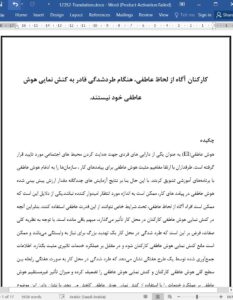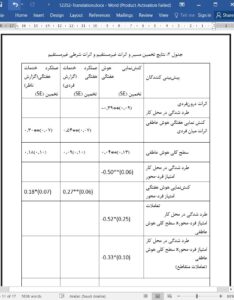Abstract
Emotional intelligence (EI) has been endorsed as a personal asset in navigating social environments. By extoling EI's positive implications for work outcomes, advocators encouraged organizations to integrate EI into selection and training programs. Nevertheless, according to meta-analytical results, the predictive validity of EI for various work outcomes may not be so promising as expected. A possible reason is that high EI individuals may not effectively enact this emotional strength under certain circumstances. However, what influences employee EI-enactment at work remains unclear. Drawing upon whole trait theory, we posit that by workplace ostracism, a salient threat to need for belongingness, may hinder employee EI-enactment and in turn constrain EI's positive impact on service performance. Data collected with a weekly diary design demonstrated that weekly workplace ostracism weakened the relationship between employees' general level of EI and their weekly EI-enactment and reduced the indirect effect of EI on weekly service performance via EI-enactment. By showing that workplace ostracism stretches EI to its limit, we make the first attempt to uncover a boundary condition for employee EI-enactment and offers a valuable insight into when EI fails to make a difference.
1. Introduction
Emotional intelligence has been touted as a valuable asset that empowers accurate understanding of one's own and others' emotional states and effective emotional regulation, which eventually promotes social functioning (Mayer & Salovey, 1997). EI is endorsed as an indispensable quality for employees holding managerial positions (Kerr, Garvin, Heaton, & Boyle, 2006; Wong & Law, 2002) and high emotional labor jobs (Herpertz, Nizielski, Hock, & Schütz, 2016). Helpful as EI is to stress adaptation and adjustment, so that it is also deemed as a resource sustaining effective coping against emotional-laden events (Jordan, Ashkanasy, & Hartel, 2002). Thus, organizations are keen to include EI as a criterion of personnel selection (Christiansen, Janovics, & Siers, 2010) and a core element of training programs (Hodzic, Scharfen, Ripoll, Holling, & Zenasni, 2018).
4. Discussion
As EI can potentially facilitate emotional understanding, regulation and social functioning, organizations have spent much on EI-oriented selection tools and training interventions. Recent research suggests a high level of EI does not necessarily lead to effective EI-enactment at work, which in turn may hinder its potential (Pekaar et al., 2018). Drawing upon whole trait theory, this weekly diary study showed that workplace ostracism, a salient threat to social belongingness, is a reasonable boundary condition for the relationship between EI and weekly EI-enactment. High EI employees failed to enact their EI effectively during the week when experiencing a high level of workplace ostracism. Our research helps account for the substantial within-person variation in EI-enactment.











